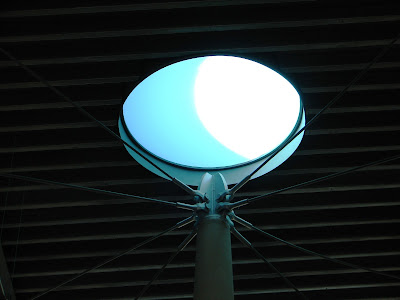In the 1890s interest in astronomy was high all across America. Of special interest were those “roads” or “canals” first seen in the planet Mars in 1877.
American astronomers needed a place where the nighttime sky was still crystal clear and very dark. The sky above the 7000-foot high town of Flagstaff, Arizona Territory was determined to be such a perfect place. As early as 1892 Flagstaff was begin called America’s Skylight City.
In 1894 American scholar, businessman and astronomer Percival Lowell decided that Flagstaff would be a perfect place to build his new observatory. The town of Flagstaff pledged to Professor Lowell its total support, including good wagon roads and excellent railroad facilities.
The town even agreed to sell Professor Lowell a 15-acre mountaintop just west of the downtown area for the grand sum of $1.00! The deal was made and construction of Lowell Observatory began in late 1894.
By 1896 Professor Lowell was gazing upon those “canals” on Mars from his Flagstaff observatory. So involved did Lowell become in the study of Mars, that the hilltop upon which his observatory was built was given the name Mars Hill.
In 1902 Professor Lowell stunned the world by stating that he believed another planet existed beyond the orbit of Neptune. Between 1902 and until his death in 1916, Lowell tried to prove that the ninth planet did truly exist.
Proof of that ninth planet now fell to one of Dr. Lowell’s students, Clyde Tombaugh. On March 13, 1930, the 75th anniversary of Professor Lowell’s birth, Dr. Tombaugh announced the discovery of the ninth planet of the solar system. The name Pluto was given to this new planet since the first two letters of the name Pluto honor the man who first suggested the planet existed – Percival Lowell.
Over the many years Lowell Observatory continued it work in the exploration of the solar system. In 1965 it was designated a National Historic Landmark. Today the observatory is still an active and vibrant scientific community whose mission remains the study of the solar system and to share the results of their astronomical research to educate the public. Public tours and educational programs are daily events for visitors of the observatory to enjoy.
Whether Pluto is a planet or a dwarf planet is for the astronomers to debate and decide. Nevertheless, Lowell Observatory is an Arizona treasure and a place to see whenever visiting the cool, high county of Flagstaff, Arizona.
Lowell Observatory is located at 1400 West Mars Hills Road in Flagstaff, Arizona. The GPS coordinates for Lowell Observatory are N35 12.101 W111 39.914. For more information about visiting Lowell Observatory visit http://www.lowell.edu/. For more information about Pluto visit www.windows.ucar.edu/tour/link=/pluto/pluto.html
 |
| Visitor Center |
 |
| The Original Observatory |
 |
| Lowell's 24 inch telescope |
 |
| Visitor gallery |
 |
| Lowell Library |
 |
| Dr. Lowell's tomb |
 |
| Original frying pan dust cover |
 |
| Flagstaff as viewed from Mars Hill |
 |
| Humphreys Peak viewed from Mars Hill |
 |
| Humphreys Peak with an early fall snow |





































